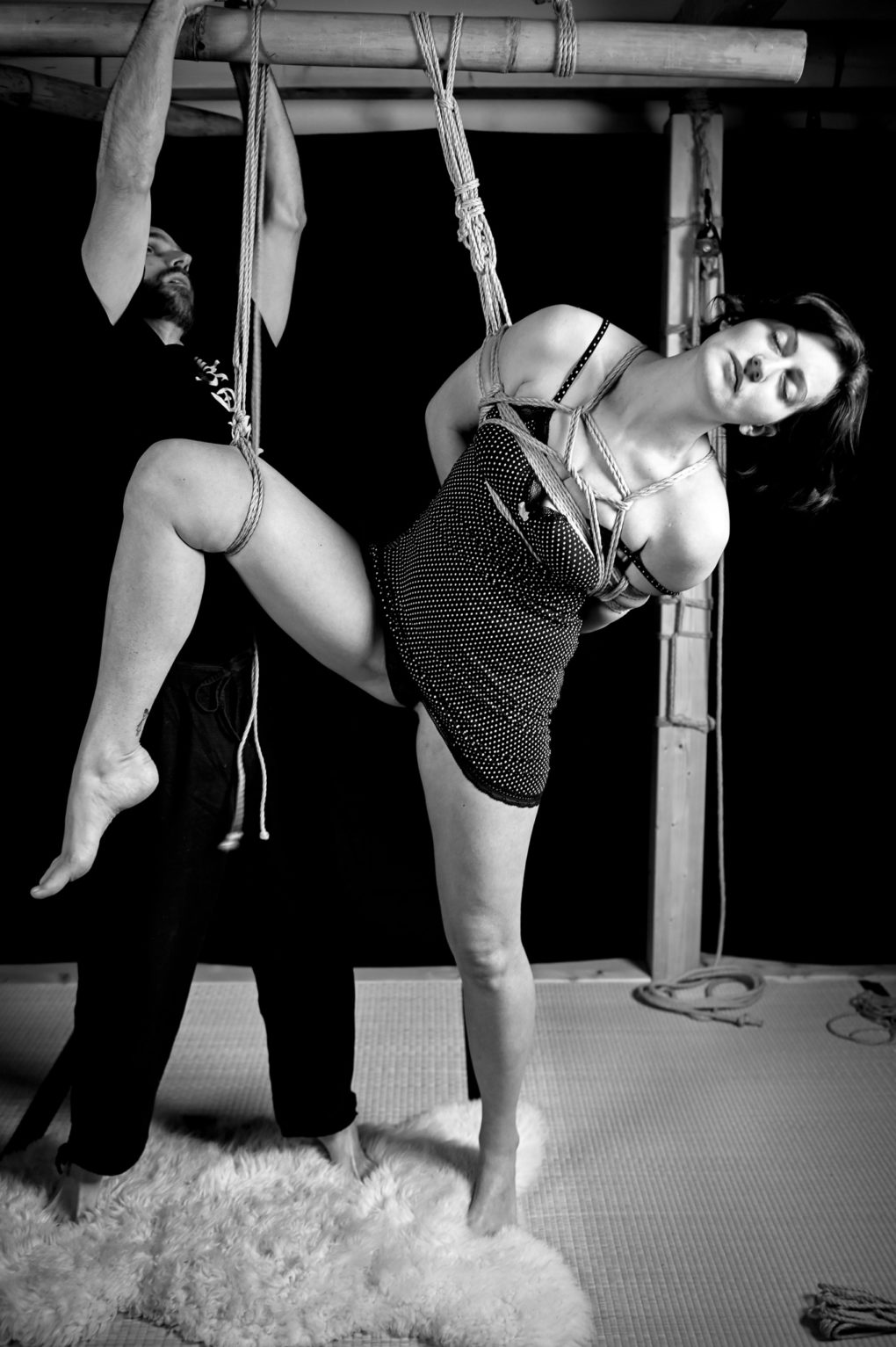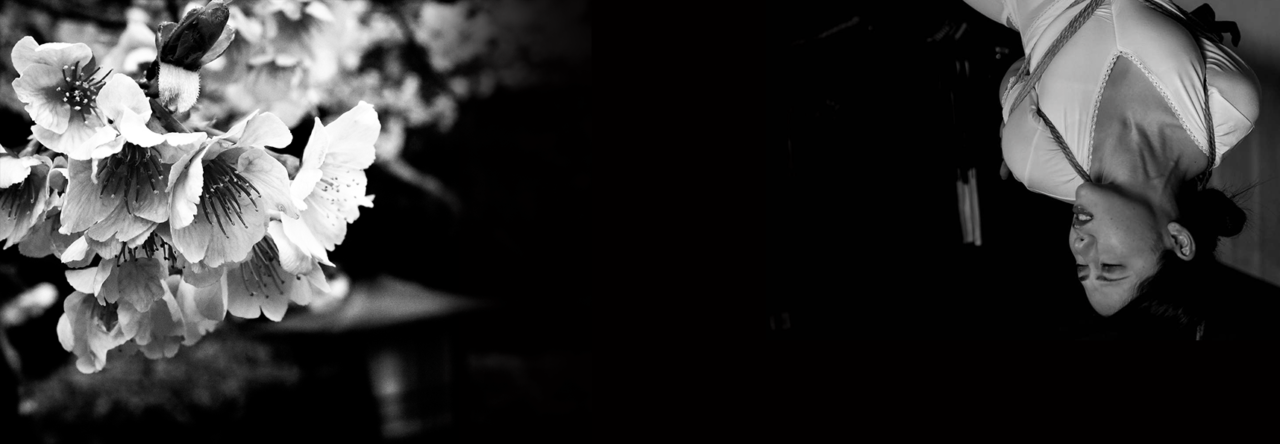Kata-ashi-zuri (片足吊り) means “one-legged suspension”. This refers to a partial suspension in which one foot or leg remains on the ground. The kata-ashi-zuri is often used as a precursor to the yokozuri.

This pattern is an important part of the 5th Kyû in Osada-Ryû. The main load is on the upper body while one foot remains on the floor. Ukete can thus feel directly if the upper body positions are correct. Furthermore, Ukete can lift the second foot independently and test the suspension.
Bakushi can create many different images even before a full suspension begins. The kata-ashi-zuri thus offers a variety that few other patterns can brag with.
The pattern is modular, which means that all suspension ropes are independent of each other. This increases safety, as every critical point is directly accessible at all times and can be adjusted, corrected or undone.
The ropes and the body form opposite triangles. This symmetry between body and rope creates an aesthetic connection between the two worlds. The appeal of this pattern stems from this connections between symmetry, shapes and the combination of body, rope and clothing.
The kata-ashi-zuri can be done on a fixed suspension point (for example a ring) as well as on a bamboo.
In a suspension point, the ropes between the upper body, thigh and suspension point form the upper half of a hishi. The lower tip of the hishi is the foot on the floor and the attachment points of the ropes to the torso and thigh form the horizontal points.



